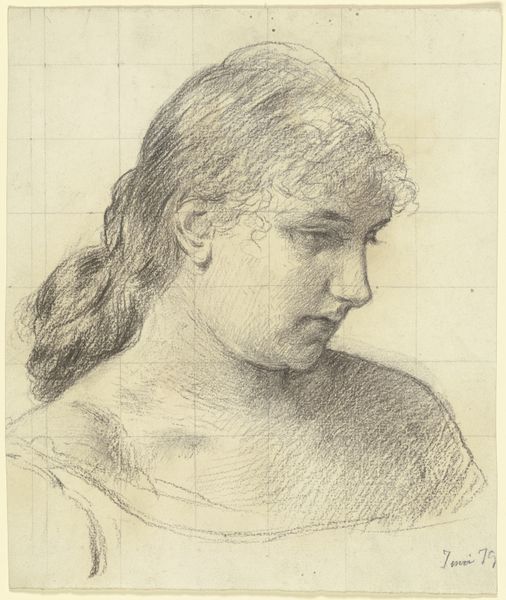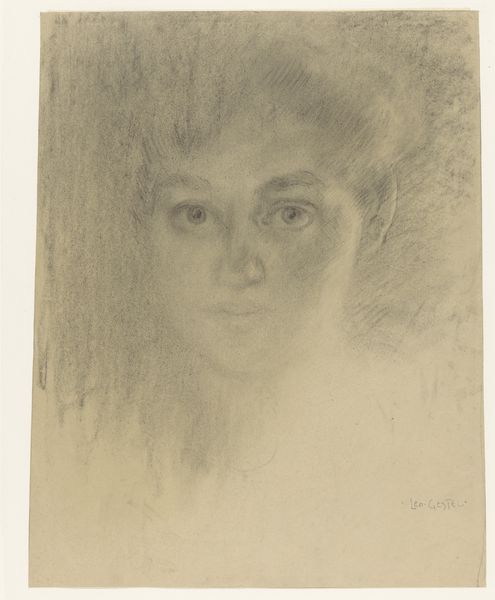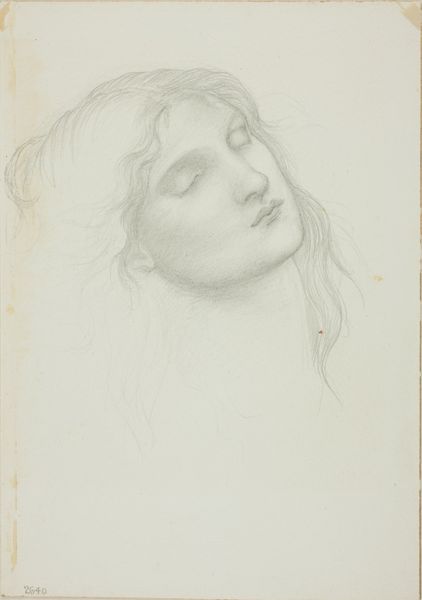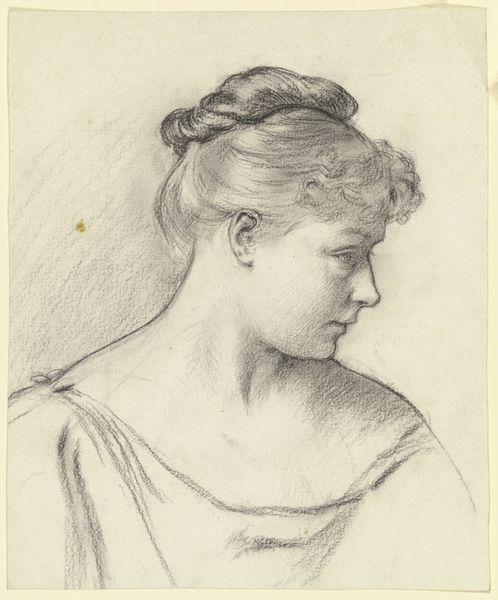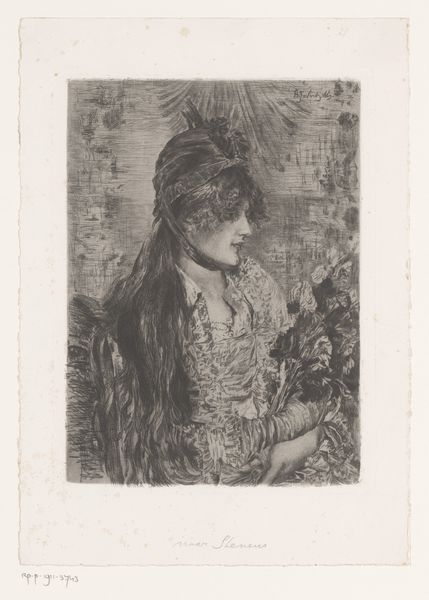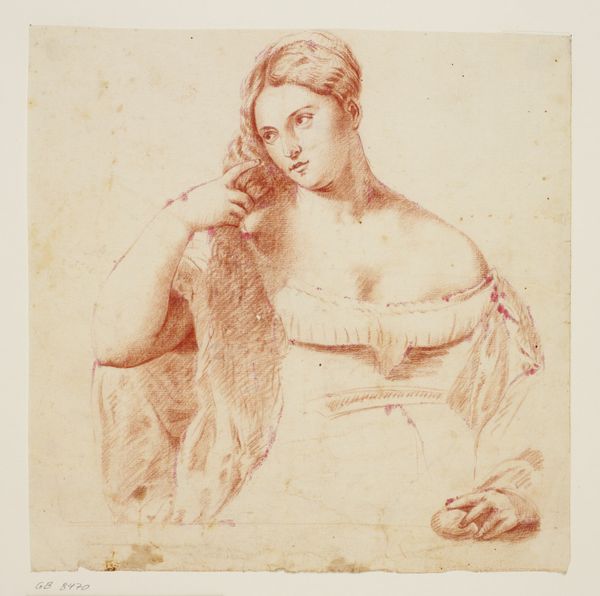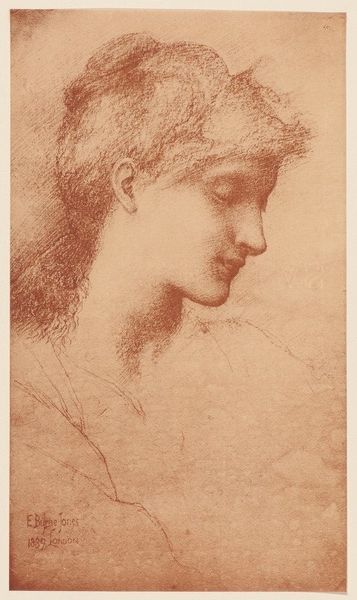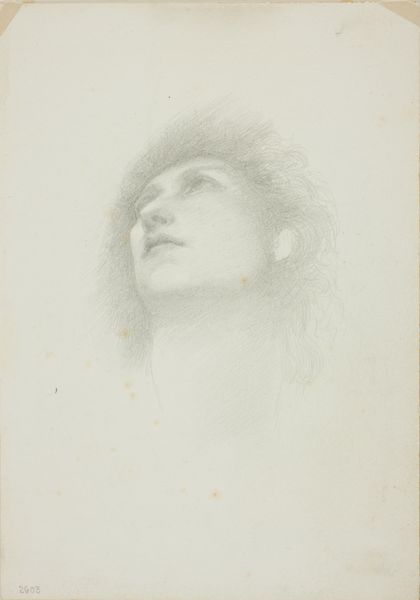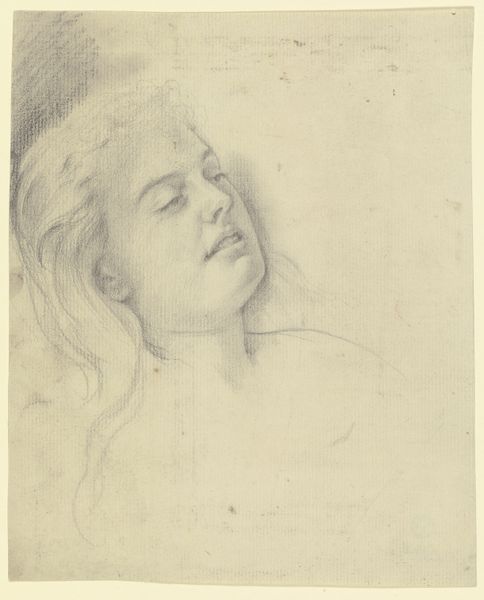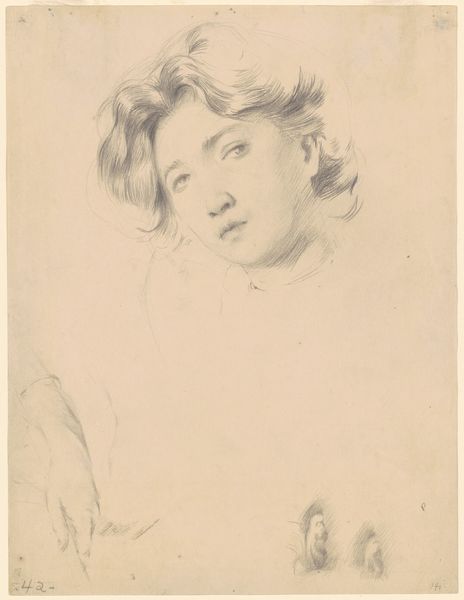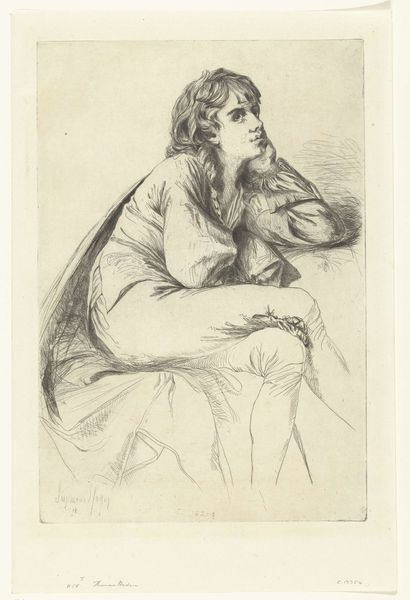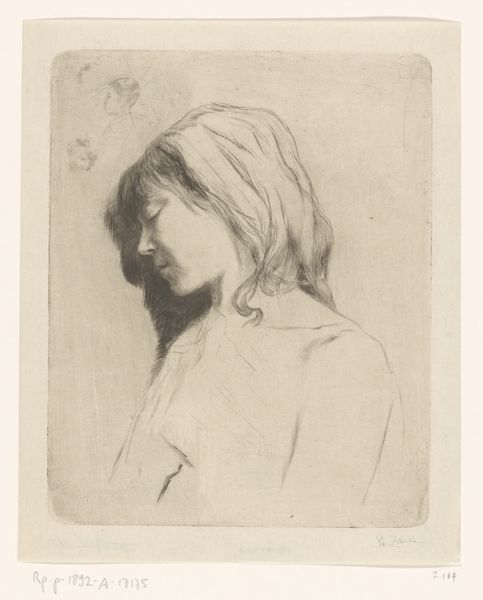
Brystbillede af en kvinde, der fletter sit hår 1833
0:00
0:00
drawing, pencil
#
portrait
#
drawing
#
figuration
#
romanticism
#
pencil
#
line
#
academic-art
Dimensions: 312 mm (height) x 245 mm (width) (bladmaal)
Editor: This is "Brystbillede af en kvinde, der fletter sit h\u00e5r," or "Bust Portrait of a Woman Braiding Her Hair" by Elisabeth Jerichau Baumann, from 1833. It's a pencil drawing. The delicacy of the lines really strikes me. How do you approach a work like this? Curator: For me, it’s crucial to consider the material circumstances of its creation. Baumann, though a woman, achieved significant recognition in the 19th-century art world. Pencil, as a readily available and relatively inexpensive material, would have facilitated her prolific output and allowed for accessibility to art education during that period. Have you considered what this piece reveals about artistic labor at the time? Editor: I hadn't thought about the pencil itself as being significant. It makes sense though – compared to oils, the means of production were much simpler and cheaper, which allowed for different kinds of accessibility. Do you think the intimate act of braiding her hair is part of that, reflecting a focus on more domestic, "feminine" subjects, maybe due to constraints put on her because of her gender? Curator: Precisely. The subject matter itself can be interpreted through the lens of material culture and consumption. What was deemed appropriate for women artists to depict often differed significantly from their male counterparts. This also influences our understanding of academic art: Who benefitted from this established structure, and whose access was limited? Editor: That's a really important point. It makes me rethink how I understand the constraints but also potential agency in choosing such subject matter. Curator: Exactly. Analyzing the materials, the production, and the subject becomes more nuanced when seen within the context of consumption and social roles. This changes how we appreciate artistic choices. Editor: It really does. Thinking about it all in terms of materials and access offers a new lens for interpretation, especially for artists whose opportunities may have been limited by gender or social standing.
Comments
No comments
Be the first to comment and join the conversation on the ultimate creative platform.
